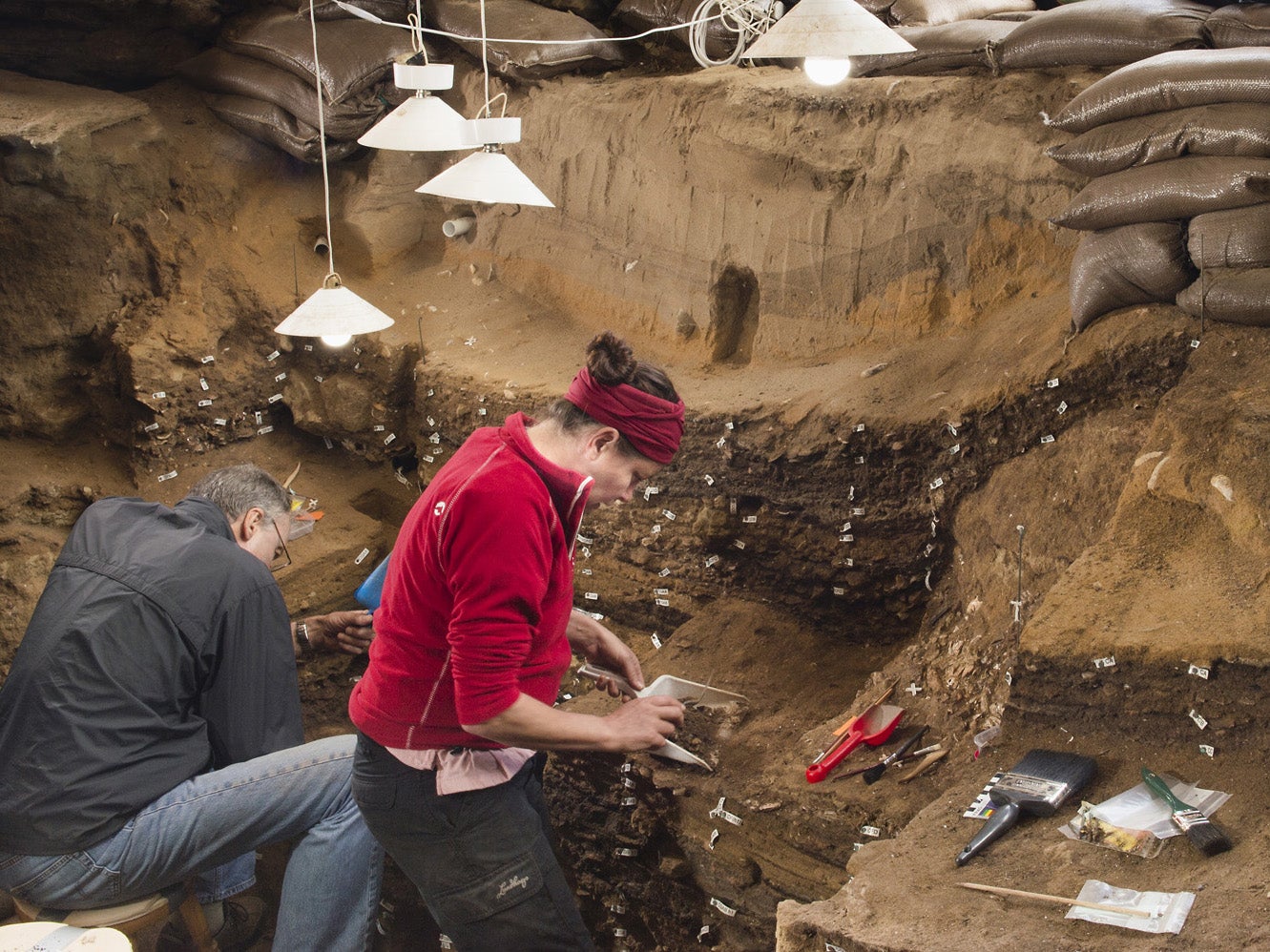The Independent's journalism is supported by our readers. When you purchase through links on our site, we may earn commission.
Oldest drawing ever found discovered in South African cave, archaeologists say
Abstract marks made in ochre 73,000 years ago provide unique insight into minds of our distant ancestors
Your support helps us to tell the story
From reproductive rights to climate change to Big Tech, The Independent is on the ground when the story is developing. Whether it's investigating the financials of Elon Musk's pro-Trump PAC or producing our latest documentary, 'The A Word', which shines a light on the American women fighting for reproductive rights, we know how important it is to parse out the facts from the messaging.
At such a critical moment in US history, we need reporters on the ground. Your donation allows us to keep sending journalists to speak to both sides of the story.
The Independent is trusted by Americans across the entire political spectrum. And unlike many other quality news outlets, we choose not to lock Americans out of our reporting and analysis with paywalls. We believe quality journalism should be available to everyone, paid for by those who can afford it.
Your support makes all the difference.A fragment of stone found in South Africa provides the canvas for what archaeologists believe is the oldest human drawing ever found.
As one of the earliest examples of artistic thinking in humans, the unremarkable-looking rock has given a unique insight into the minds of our distant ancestors.
The cross-hatched pattern drawn in ochre had been buried in Blombos Cave, east of Cape Town, for around 73,000 years.
It was unearthed as archaeologists sifted through the debris found on the floor of the cave, which has already yielded a wealth of materials made by our Stone Age ancestors.
The researchers examined the marks and even recreated the patterns themselves, concluding they had definitely been deliberately applied with an ochre crayon.
Archaeologists used to think the ability of our species to think symbolically did not emerge until Homo sapiens colonised Europe around 40,000 years ago.
However, a steady trickle of evidence from places as far apart as Morocco and Indonesia has revealed that humans began practising art far earlier.
With the discovery of their red ochre - referred to as a “hashtag” in the scientific journal where the study will be published - the archaeologists say they have identified a piece that predates previous attempts at abstract drawing by at least 30,000 years.
Among the layer of archaeological debris in which the drawing was unearthed, the team also found more evidence of these early humans’ capacity for symbolic thinking.
The same ochre that was used to scratch lines on the rock fragment was also used to coat shell beads.

On top of this, they found still more pieces of ochre that themselves had been engraved with abstract patterns closely resembling the ones drawn on the stone.
“This demonstrates that early Homo sapiens in the southern Cape used different techniques to produce similar signs on different media,” said Professor Christopher Henshilwood, who led the study and has been excavating the Blombos Cave since 1991.
“This observation supports the hypothesis that these signs were symbolic in nature and represented an inherent aspect of the behaviourally modern world of these African Homo sapiens, the ancestors of all of us today.”
The discovery was documented in the journal Nature.
The findings were welcomed by professor Alistair Pike, an archaeologist at the University of Southampton who has previously identified art nearly as old as the Blombos stone, but made by Neanderthals.
“It’s very exciting but also not very surprising given the amount of symbolic activity that has already been found in the cave,” professor Pike, who was not involved in the new study, told The Independent.
However, while there is a chance the scratched ochre discovered in the cave could have been produced in a purely functional way, he said the drawing itself is unambiguously a piece of art.

It also ties together the various engravings and beads from around this period with the elaborate cave paintings made by our more recent ancestors.
Professor Pike noted that even though this simple piece may appear to be the sign of a more primitive brain, in fact the person who created it would have been no less developed than the creators of the elaborate animal drawings made in Europe thousands of years later.
“I guess you can contrast a Jackson Pollock painting with a Giotto and say gosh, those are two very different things – but they are formed by the same symbolic processes and meanings,” he said.

Join our commenting forum
Join thought-provoking conversations, follow other Independent readers and see their replies
Comments